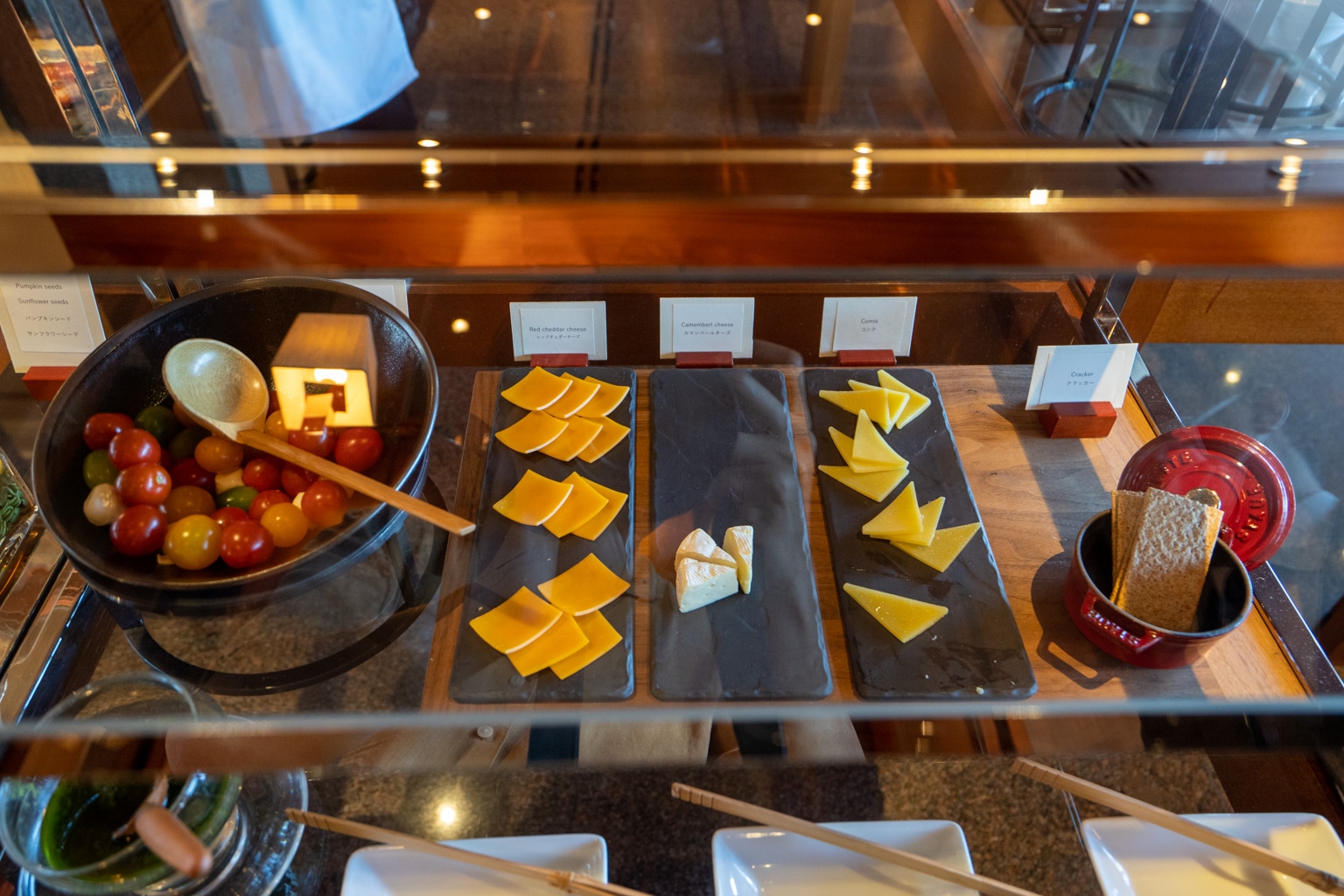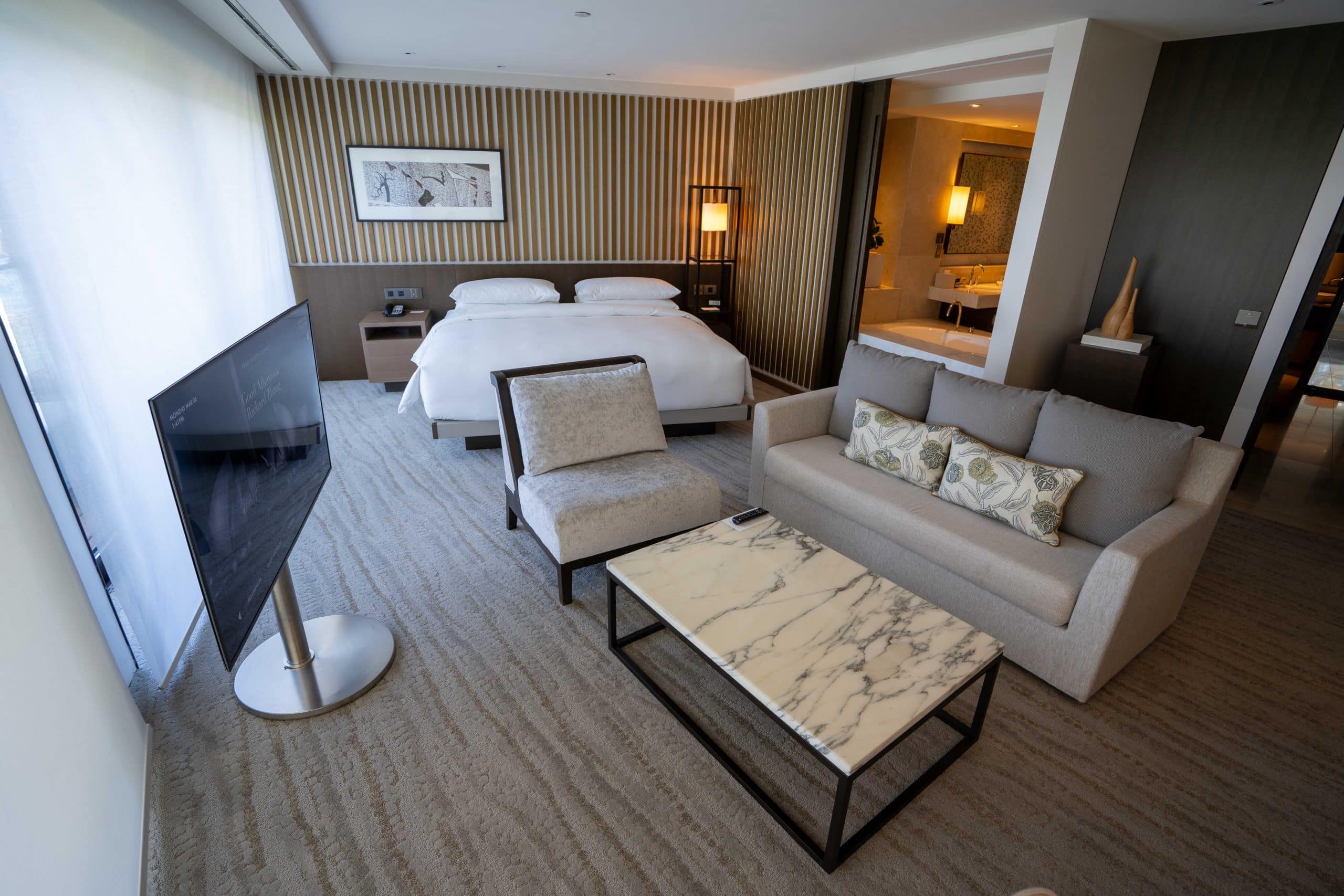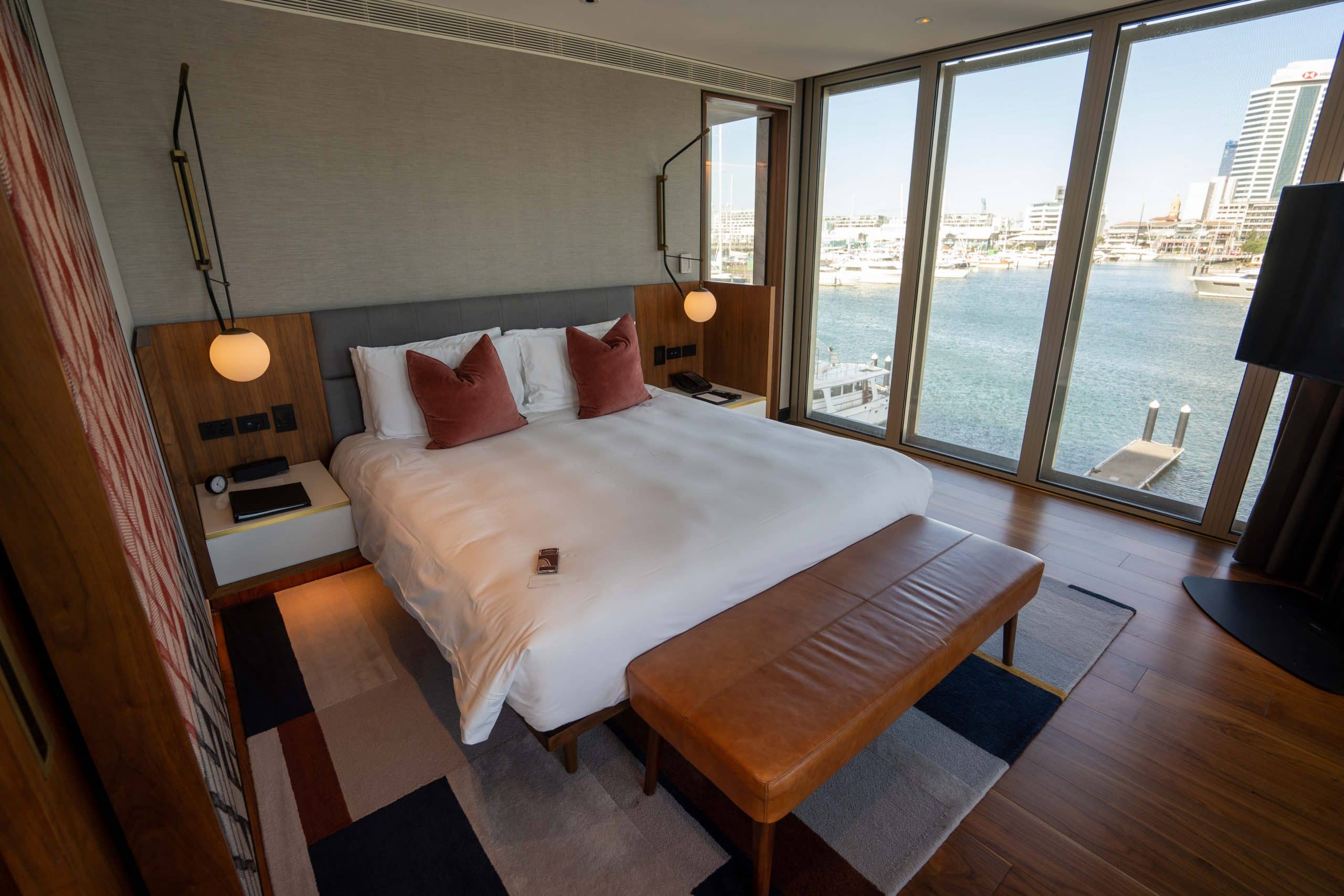We spent one night at the Park Hyatt Tokyo between our time in the Kansai region and a side-trip to the picturesque mountain village of Hakone.
The Park Hyatt Tokyo was among the first Western-style luxury hotels to debut in Japan in 1994. Later, the hotel became well-known for its appearance in the Oscar-winning movie Lost in Translation.
As one of the world’s oldest and most recognizable Park Hyatt properties, I was eager to see how the Park Hyatt Tokyo would measure up to its illustrious reputation.
In This Post
- Booking
- Location
- Check-in
- King Deluxe Room
- Twin Room
- King Deluxe View Room
- Breakfast
- Dining
- Other Facilities
- Conclusion
Park Hyatt Tokyo – Booking
Within World of Hyatt’s award chart, the Park Hyatt Tokyo is classified as a Category 7 hotel. This category has a standard redemption cost of 30,000 World of Hyatt points per night, which is precisely what I booked this stay for.
You’ll find that cash rates at the Park Hyatt Tokyo tend to be quite expensive, falling between ¥95,000–130,000 ($878–1,200 CAD).
We value Hyatt points at 1.9 cents per point (cpp) (CAD). In this instance, redeeming points was quite advantageous, offering a redemption value of nearly 3cpp (CAD).
If you’re booking a cash rate, consider booking through Hyatt Privé for further benefits at these high-end hotels. Even if you have elite status with Hyatt, you can get more perks that are in addition to your regular elite benefits.
Book a hotel stay with Prince of Travel through Hyatt Privé and enjoy exclusive additional benefits at no cost to you, including:
Park Hyatt Tokyo – Location
The Park Hyatt is located in the Shinjuku district, near the border with Shibuya. The hotel encompasses the top 14 levels of the Shinjuku Park Tower.
We decided to stay here as the hotel is located in Shinjuku, whose sprawling train station was the departure point for our train to Hakone the following day.
Shinjuku is a major hub in Tokyo, filled with neon lights and skyscrapers. In the daytime, it serves mostly as a business district, while at night, it transforms into an entertainment district due to its many eateries and nightclubs.
Unfortunately, the Park Hyatt Tokyo isn’t as convenient for walking around as some other Tokyo hotels, as it’s located quite a distance from public transportation. This is relatively rare for a luxury hotel in Tokyo, many of which are positioned directly at the doorstep of a train station or two.
Tochōmae Station on the Toei Ōedo Line is one block away, about a 7-minute walk north from the hotel. Shinjuku Station, the closest major hub, is about 12 minutes east of the Park Hyatt Tokyo on foot.
These distances from nearby metro stations are significantly far by Tokyo standards, and I’d say this is definitely one of the hotel’s major weak points.
You’ll likely have to take a taxi to the hotel, especially if you have luggage with you. Additionally, if you’re walking from Shinjuku Station, you may have to pass through some of Tokyo’s seedier streets, which isn’t necessarily something you’d expect when staying at a Park Hyatt hotel.
With respect to reaching the hotel from the airport, Tokyo Narita International Airport is an hour’s journey by car or an hour and a half by train. In comparison, it’s about a 25-minute journey by car from Tokyo Haneda Airport, or about an hour’s journey by way of the Keikyū Airport Line to Daimon Station, followed by another ride along the Toei Ōedo Line to Tochomae Station.
Park Hyatt Tokyo – Check-in
Approaching the Shinjuku Park Tower, you’ll meet a stark, grey facade. The main access to the hotel, which is marked with a subtle logo, is under a jagged entranceway.


We then headed through a foyer with a minimalist art installation to the ground-floor elevators, which brought us up to the 41st-floor main atrium.



Stepping off the elevators, you immediately arrive at the Peak Lounge, a spacious and serene bamboo garden in the sky.
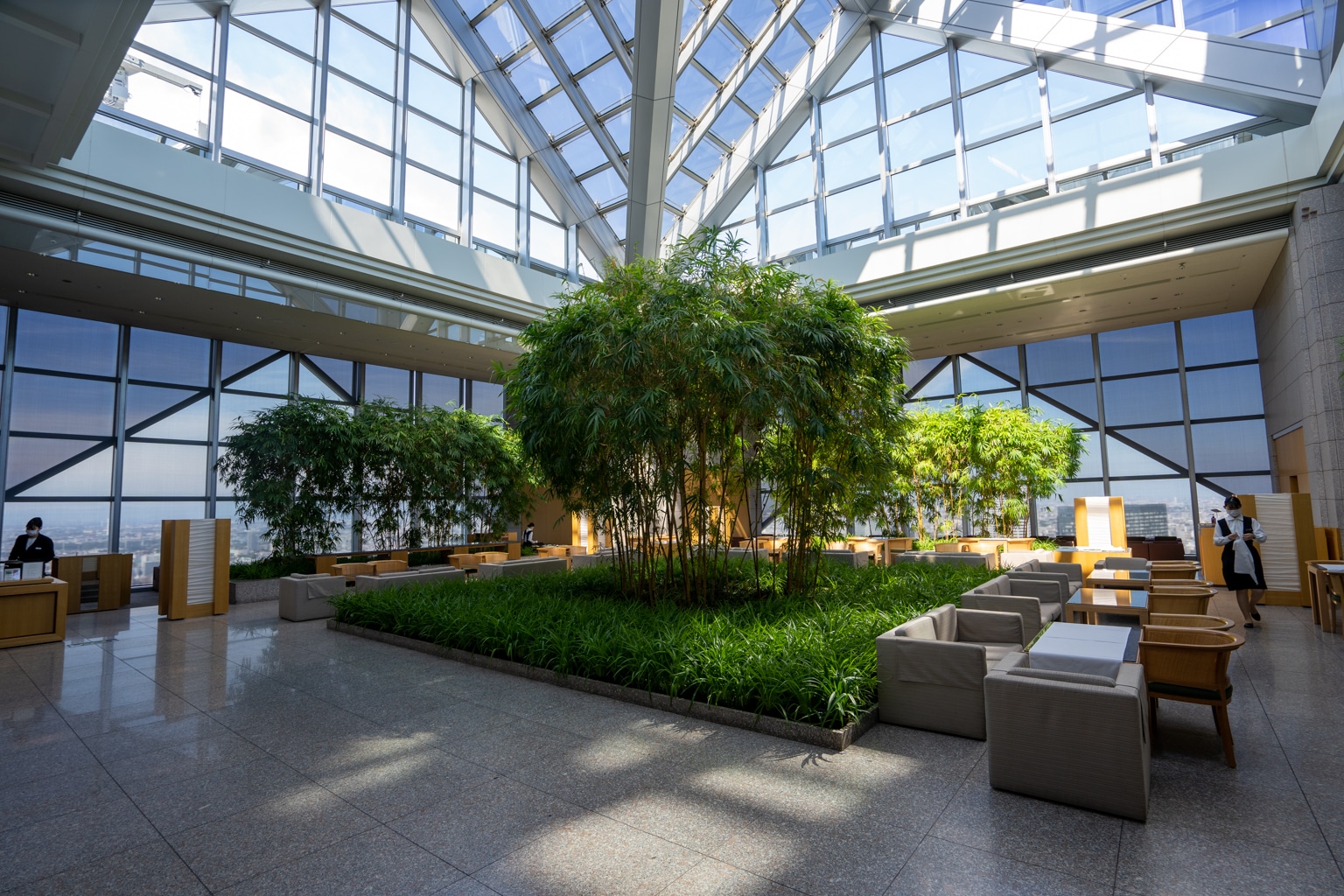


The glass atrium creates a warm and welcoming room of light, with bamboo trees, high-pitched ceilings, and sweeping views. Past this atrium, however, the hotel’s modernity sadly dwindles.


From the Peak Lounge, you’ll then head through a series of lengthy halls before arriving at the hotel’s front desks. Along the way, the lobby lounge has various groups of seating scattered throughout, with incredible views of the city.


The check-in area is located in a very peaceful, almost library-like setting.
We were informed of the perks we’d enjoy through my Hyatt Globalist status, which includes either a Western or a Japanese-style breakfast. Moreover, we had the choice of eating the Japanese breakfast at the restaurant or having it sent to our room, and we opted for the latter.

It’s worth noting that the Japanese breakfast must be reserved in advance, and there are only a few sets available each day. Because we arrived fairly late at night, the hotel associate had to check to see if there was still Japanese breakfast available for the next morning, and to our delight, there was.
When it came to a suite upgrade as a Globalist member, we were advised that the hotel was full that evening, and that there was only a one-category room upgrade to the King Deluxe Room available that night.
Former Japanese Prime Minister Shinzo Abe’s funeral happened to take place on the same day as our stay. We saw various national delegations staying here, so it was unsurprising that the hotel’s suites were filled.

As I made my way upstairs to Room 4815, I couldn’t help but note the hotel’s antiquated interiors, particularly the blue-green carpets in the elevator region.
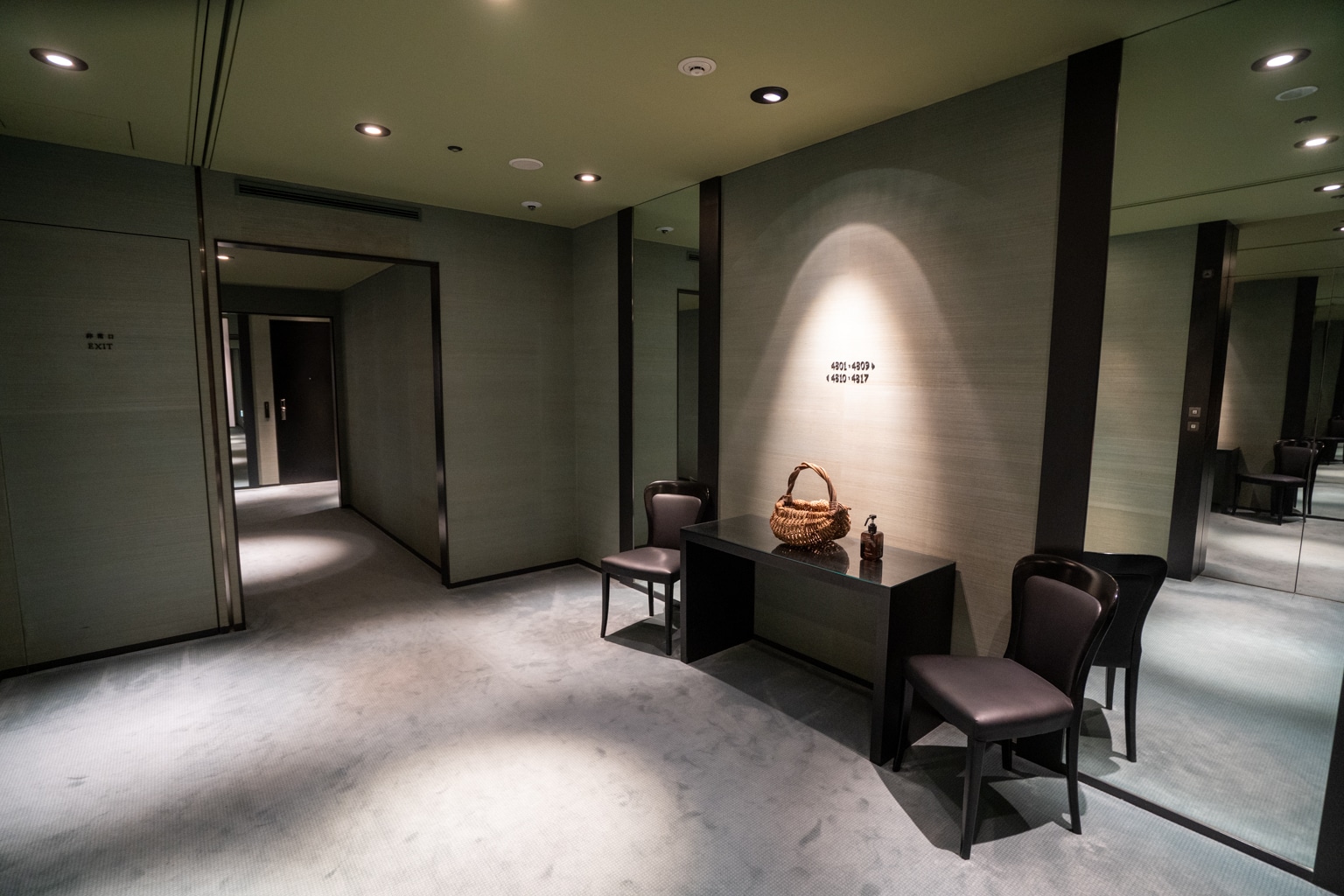

The hotel opened in 1994 and appeared to be striving for a classic, timeless aesthetic. However, when compared to more modern hotel options in town, this property’s need for an overall refresh is quite apparent.
Park Hyatt Tokyo – King Deluxe Room
The King Deluxe Room felt the same as the corridors. The beige walls, carpets, and furnishings are reflective of a room from the Park Hyatt brand’s very earliest days.
Nevertheless, the room was still inviting and spacious, especially by Tokyo standards, where hotel rooms are often small.


The Shinjuku Park Tower is a towering building in the area, so you’ll be treated to sweeping views regardless of which direction you’re facing.
If you find yourself in a west-facing room, you should be able to view Mount Fuji on a clear day. The rooms with an eastward view face towards the Tokyo Skytree, and the southward-facing rooms have views of Tokyo City, Tokyo Bay, and beyond.
The king bed was comfortable enough, flanked by two side tables set with natural spring water and a universal adaptor for international guests.


Fronting the king bed is a large bookshelf and an adjoined pantry, with a TV to its right. Here you can find a coffee and tea station, a Nespresso machine, and a minibar.



When I opened the pantry, I found a welcome note and a small gift.

A small seating space with two armchairs, an ottoman, and a glass table are located in the room’s far left corner. The skirted armchairs only added to the space’s outdated undertones.

On the far right-hand side is a desk, which had a bulky lamp taking up quite a bit of its space.

The bathroom is located behind two wooden sliding doors. The bathroom features a single vanity, a freestanding marble tub in the middle, and an enclosed shower and toilet on each side of the tub.



The bathroom has an unconventional layout, and I wasn’t a fan of the yellow-brown checkered tile floor pattern either.
Lastly, a spacious walk-in closet is accessible from the bathroom, fitted with two plush bathrobes.

Overall, even though the room had a comfortable bed and lovely views, I was definitely expecting a bit more from a hotel of the calibre of the Park Hyatt Tokyo.
While it’s only natural that some hotels will be more dated than others, some of the Park Hyatt’s design choices, like the blue-green carpet and yellow-brown floor tiles, were unsightly to me even beyond the hotel’s old age.
Park Hyatt Tokyo – Twin Room
I had a chance to check out some of the other room types, including the Twin Room. This is a base-level room, the same room type as the King Room, but with twin beds instead.


The twin room has large windows that permit plenty of light to flood in. Indeed, one of the best features of staying at the Park Hyatt is the uninterrupted views from all sides of the buildings, which you’ll get no matter which room you’re staying in.
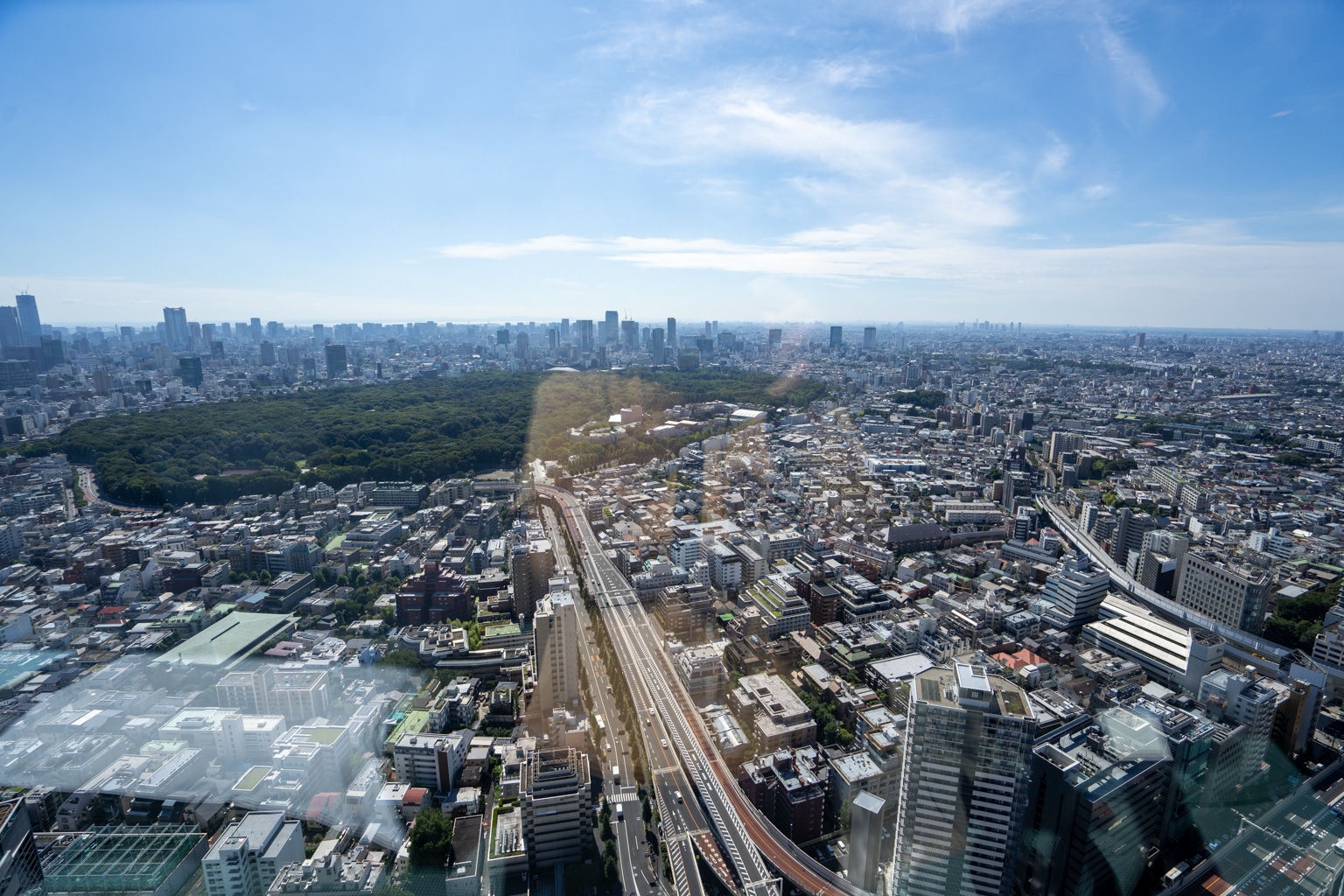
However, this room type was certainly smaller, with a tighter arrangement of interior pieces. The reading chair and ottoman sit in front of the TV in the room’s far right corner, while the desk and pantry are to the right.

The bathroom in the Twin Room is likewise smaller. This space also features a separate enclosed toilet and shower, as well as a freestanding tub.

Park Hyatt Tokyo – King Deluxe View Room
After checking out the Twin Room, I went and had a peek at the King Deluxe View Room, a category higher than the King Deluxe Room I was staying in myself.
This room has beautiful corner views of the city, and is much larger in size.

Here, the king bed is fronted by the TV. A single armchair and ottoman are in the far left-hand corner, and then the desk sits at an angle in the right-hand corner.

The bathroom, in this instance, is lengthy, with similar interiors as the King Deluxe Room. The bathroom features a second (albeit very old-school) TV adjacent to the vanity, while the tub sits at the outer end, next to the window.

Park Hyatt Tokyo – Breakfast
Although the hard product of the hotel was somewhat disappointing, the in-room breakfast was essentially the saving grace of our experience here at the Park Hyatt Tokyo.
This was among the best Japanese-style breakfasts we’d had on this trip across a wide range of hotels, on par with the excellent in-room breakfast at, say, The Ritz-Carlton, Kyoto.


This particular breakfast offered a warm tofu bath, which brings an elevated touch to any Japanese breakfast sitting. It felt amazing to roll out of bed and savour some warm tofu in the morning, with some hot miso soup, rice, and a symphony of side dishes.
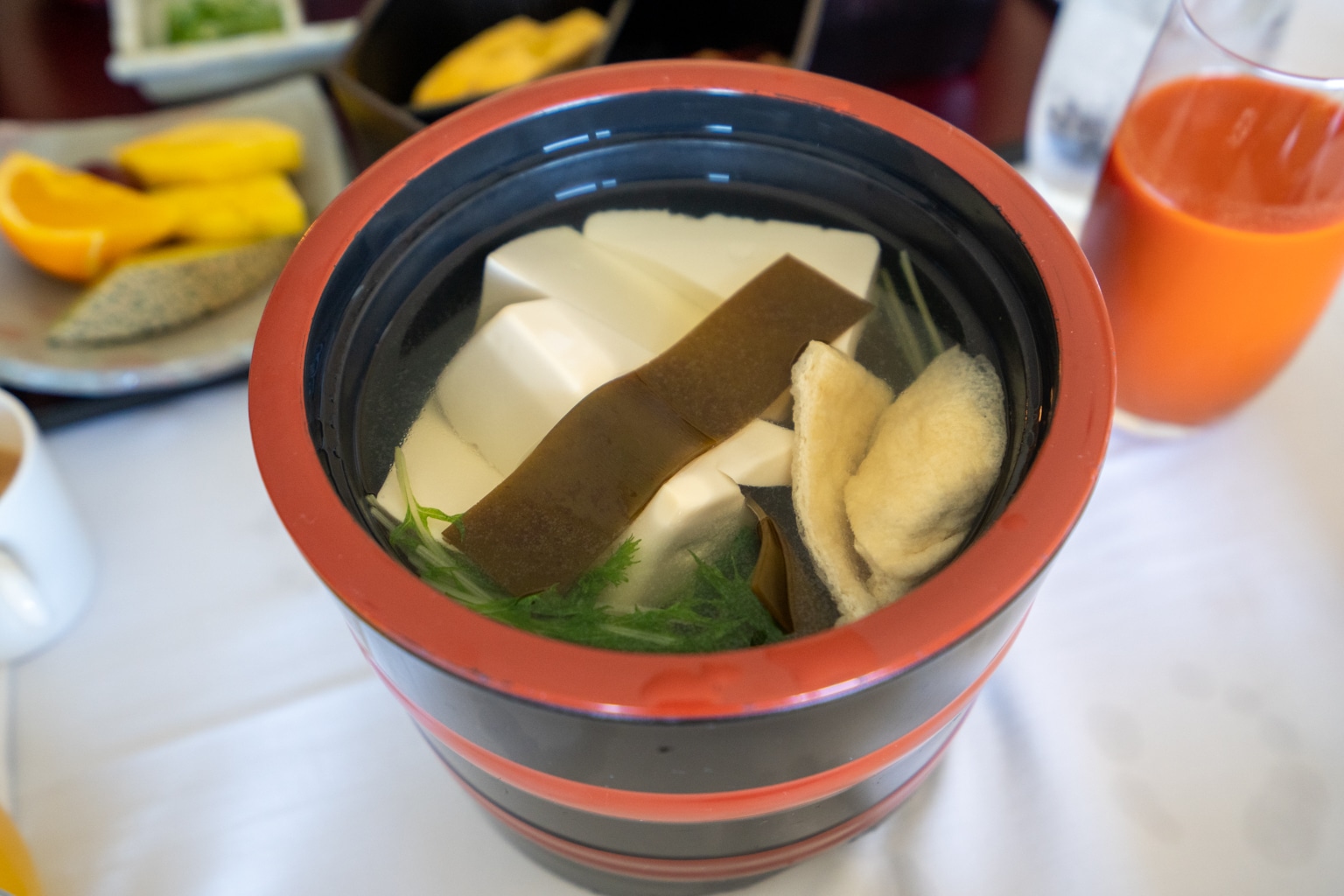
The main course consisted of fish with many accompaniments, which made for a delectable and fulsome meal.


You can also have the Western breakfast, which takes the form of a more traditional buffet spread in the Girandole restaurant. Although I didn’t eat breakfast here, I stopped by to take some photos.
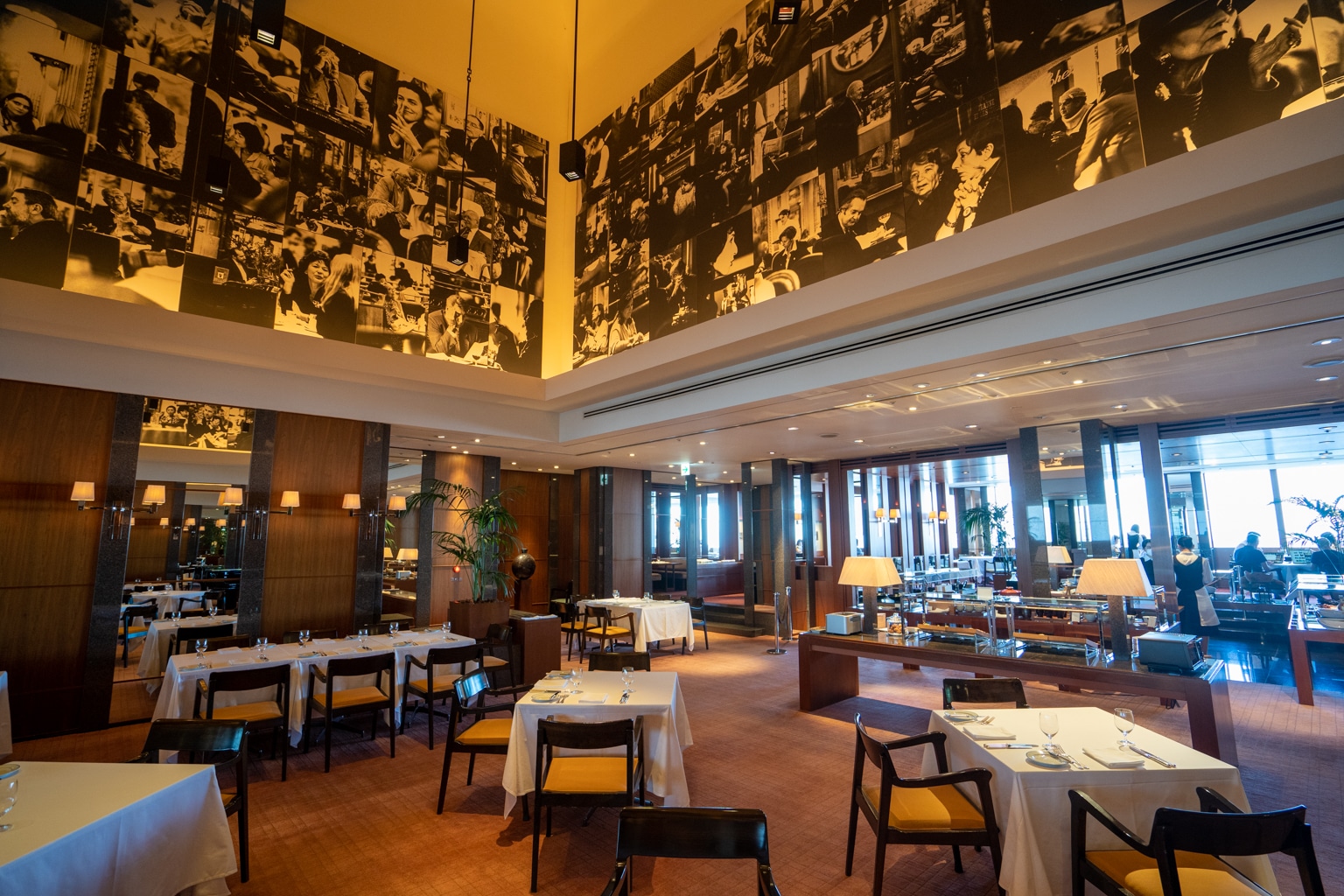

The spread didn’t seem as impressive as other hotel options here in Tokyo, such as the Conrad that I had visited earlier on this trip. In addition to a multitude of Western breakfast items, there was a Japanese station with rice bowls, but the without as many accompaniments as other Tokyo hotels offer up.
Moreover, the Western items also seemed less bountiful, and the overall spread felt a little sparse. If you’re eating breakfast at the Park Hyatt Tokyo, I’d definitely recommend picking the Japanese set meal, and having it delivered to your room is only another layer of luxury on top.
Park Hyatt Tokyo – Dining
When it comes to dining, there are quite a few options at the Park Hyatt Tokyo.
The Girandole is a French-style brasserie, considered the heart of the hotel. The restaurant is quite impressive with its historical significance, and the lofted ceiling area is decorated with numerous photos of major figures who have eaten here in the past.

One of Tokyo’s most renowned restaurants, the prestigious New York Grill and its adjoining bar, are located on the hotel’s 52nd floor.
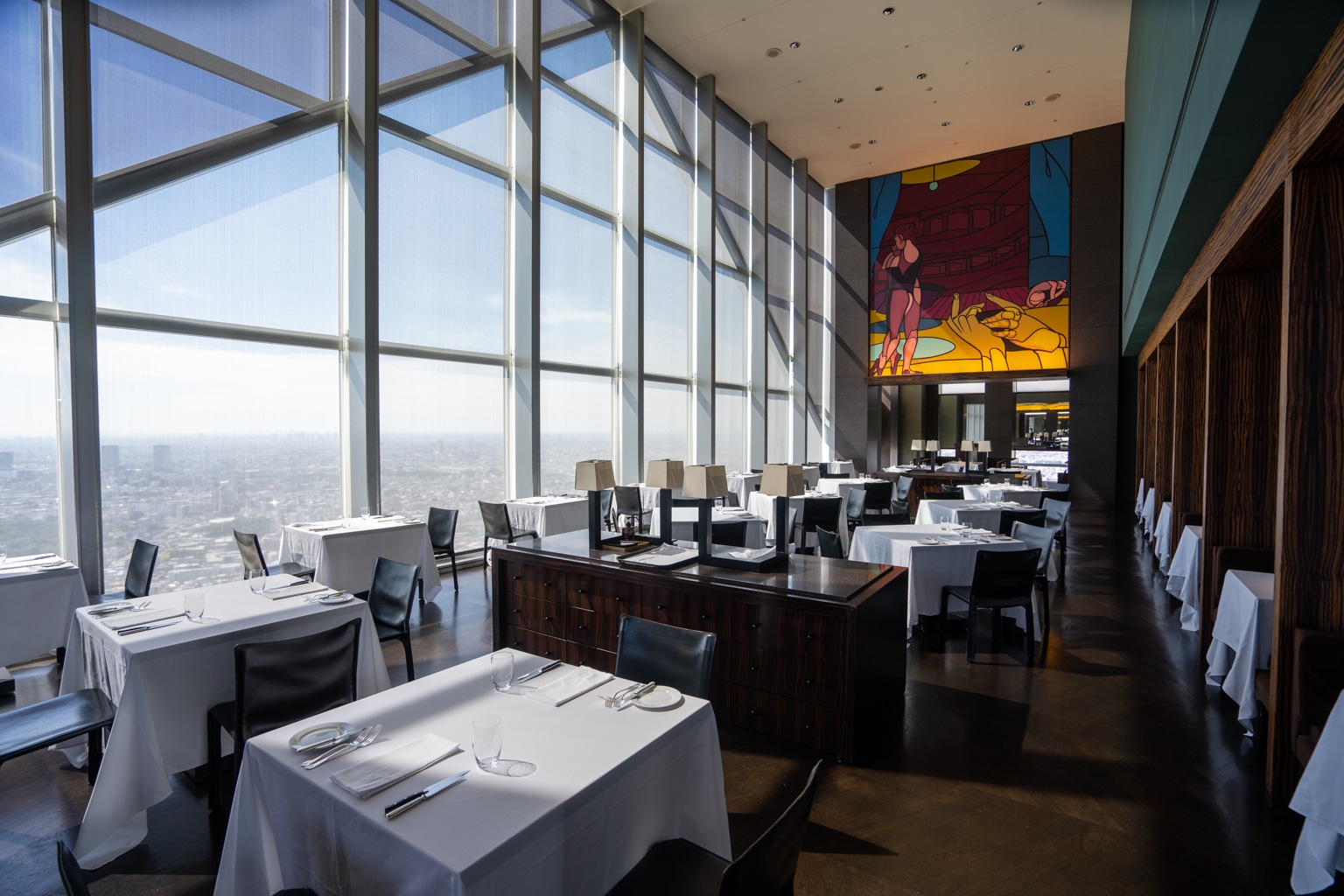

New York Grill offers stunning panoramic views of the city with a modern and sophisticated atmosphere. The venue’s popularity results from the movie Lost in Translation, and you can find an eponymous cocktail being served here.

We considered stopping by for a drink in the evening, which is very much one of the quintessential experiences that you should try out when staying at the Park Hyatt Tokyo. Unfortunately, on this occasion, we were a little too tired to go for a drink.
I did, however, poke my head in and saw many guests enjoying themselves with live music, which is played every evening at the New York Bar against stunning evening views of Tokyo.
Keep in mind that the New York Bar & Grill is a very American-style experience, so depending on the type of experience you’re seeking when visiting Japan, this may or may not be a point of attraction for the Park Hyatt. Indeed, the 52nd-floor venues were described to me as very popular among Western guests, as they’re made to feel more at home on a trip to Japan.
On the 40th floor, the Japanese restaurant Kozue serves everything from traditional country fare to a modern take on kaiseki.


Finally, near the hotel’s main entrance on the second level, there is a Pastry Boutique, which seemed like a nice spot to grab a coffee in the morning before heading out.


Park Hyatt Tokyo – Other Facilities
The hotel pool on the 47th floor complements the Peak Lounge at the hotel’s entrance. The lap pool is quite large, and sits in a greenery-filled atrium adorned by floor-to-ceiling windows and skylights, offering stunning views of the city when relaxing or swimming.

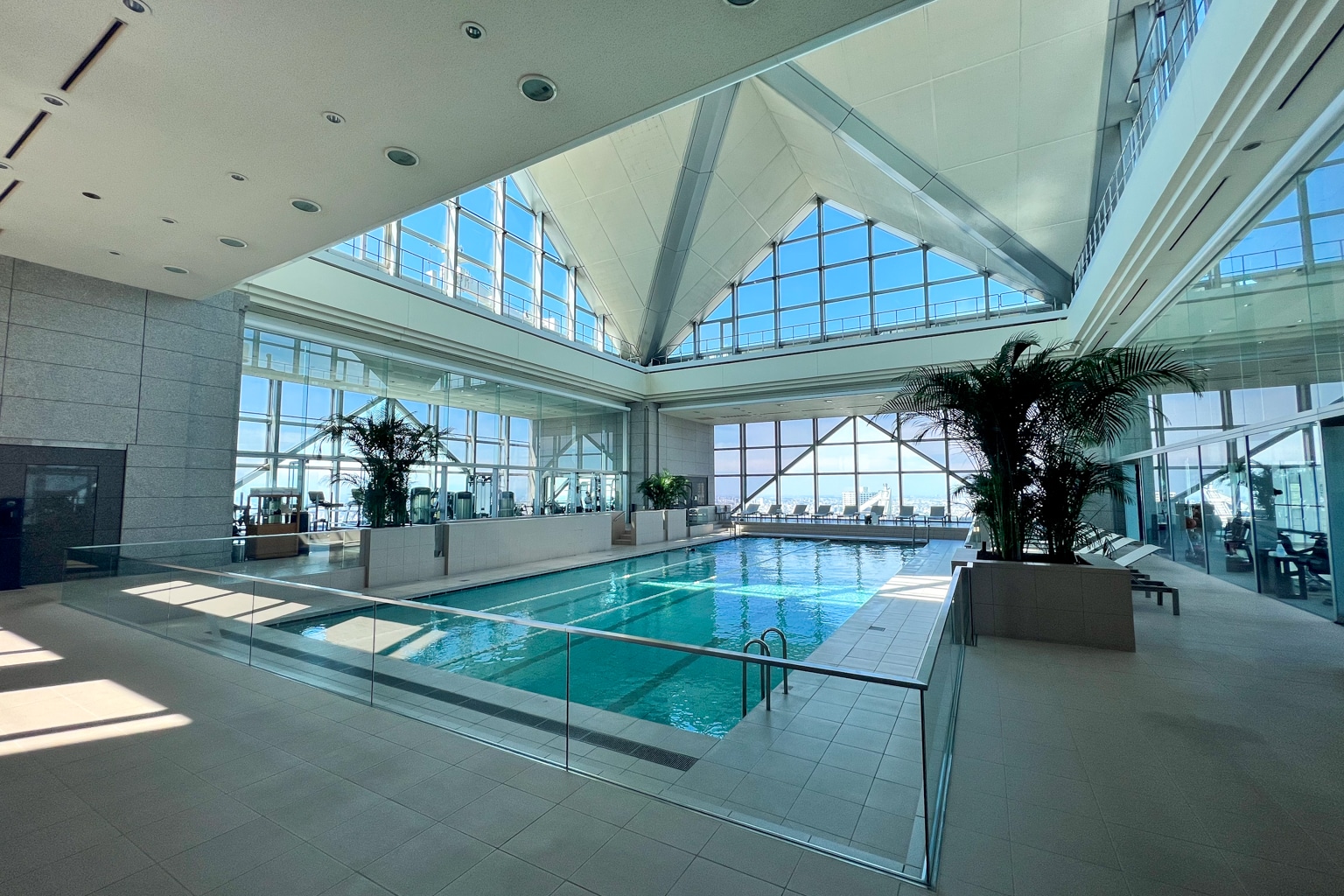

On the pool deck, there are plenty of lounging chairs to relax under the daylight streaming in.


The fitness centre is also tucked away in the pool area, spanning both sides of the pool, partitioned by glass panels. Cardio equipment, such as treadmills and exercise bikes, face the windows on both sides with scenic views.


Additionally, the weight equipment selection was extensive, with a range of weight machines, a bench press, a cable machine, and a squat rack.

Lastly, the spa amenities include a hot tub, a cold plunge, a sauna, and comfortable-looking change rooms.



Conclusion
The Park Hyatt Tokyo appears to be coasting on the memory of a movie made long ago. I had expected a higher standard from such a well-regarded and prestigious hotel, but my overall impressions were quite disappointing.
The hotel could undoubtedly benefit from a refresh and redesign in the coming years. By doing so, hopefully, the Park Hyatt Tokyo can uphold its historical significance as one of Japan’s first Western-style luxury hotels, especially among its more contemporary counterparts these days.
One shortcoming that the hotel won’t be able to do much to address is the location, as the hotel isn’t situated directly next to any major train stations.
Unless you happen to be a very dedicated Hyatt loyalist or a die-hard fan of Lost in Translation, I don’t think the Park Hyatt Tokyo is quite aspirational enough to warrant going out of your way to visit, and I can’t see myself returning on future Tokyo trips until there are some refurbishments planned.





























